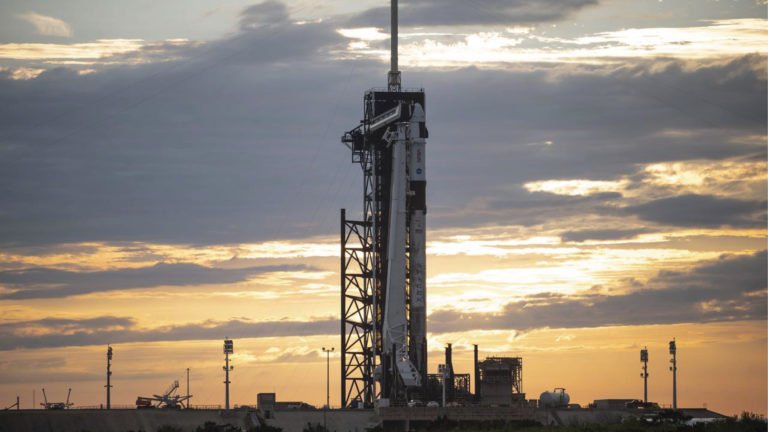(Free Press Photo: NASA)
SpaceX has submitted to the Federal Communications Commission (FCC) a plan to implement the first unmanned orbital test flight of its new missile. Starship Designed to carry passengers and cargo to the Moon, Mars and other places.
The launch will take place from SpaceX’s base in southern Texas and after orbiting the Earth at The 90-minute journey, The missile will return and land in a controlled manner in the Pacific Ocean, near Hawaii, according to notification to the Washington-based Federal Communications Commission (FCC).
The FCC must grant permission to use communications equipment during the flight, for which a date has not been specified in the plan, but according to specialist sources, it will be before the end of this year.
The missile is made of stainless steel and has a height of 16 floors.
When placed over the 70-meter-high Super Heavy booster, the Starship, which can be reused as SpaceX’s Falcon 9s that ferry astronauts and cargo to the International Space Station (ISS) under contract with NASA, is nearly 120 meters high.
Entrepreneur Elon Musk’s company has already conducted several tests with the Starship prototypes and last week made a successful landing and restoration of one of them.
According to the plan submitted to the FCC, It will roughly “soft” land in the sea of the spacecraft 100 km off the coast of Kauai, a Hawaiian island.
The specialist portal Spaceflight.com indicated Friday that SpaceX intends to separate the spacecraft from the super heavy fuel, whose 28 methane Raptor engines have a force twice as strong as NASA’s Saturn rockets, a few minutes after launch.
After separation, the propellant will begin to descend to the ground and will descend approximately 8 minutes and 15 seconds after being launched into a position on the ground. The Gulf Of Mexico About 20 km from the coast.
Meanwhile, the spacecraft will move east over the Gulf of Mexico, southern Florida and Cuba, and its Raptor engines will shut down once it reaches a required orbital velocity of over 27,000 km / h in about 8 minutes 41 seconds from launch.
SpaceX said in a statement that it intends to “collect as much data as possible during the flight to determine the dynamics of the input and better understand what the vehicle is exposed to in a flight system that is extremely difficult to predict or reproduce on a computer.”
“Any change in vehicle design or CONOP (concept of operations) after the first flight will depend on this data, which will allow us to build better models for our internal simulations,” the company said in California.
* In partnership with Forbes Mexico Article from The Forbes Team

“Problem solver. Proud twitter specialist. Travel aficionado. Introvert. Coffee trailblazer. Professional zombie ninja. Extreme gamer.”




More Stories
With a surprise in the case: a strange cell phone from Nokia was introduced
PlayStation Stars: what it is, how it works and what it offers to its users | Sony | video games | tdex | revtli | the answers
t3n – Digital Pioneers | digital business magazine